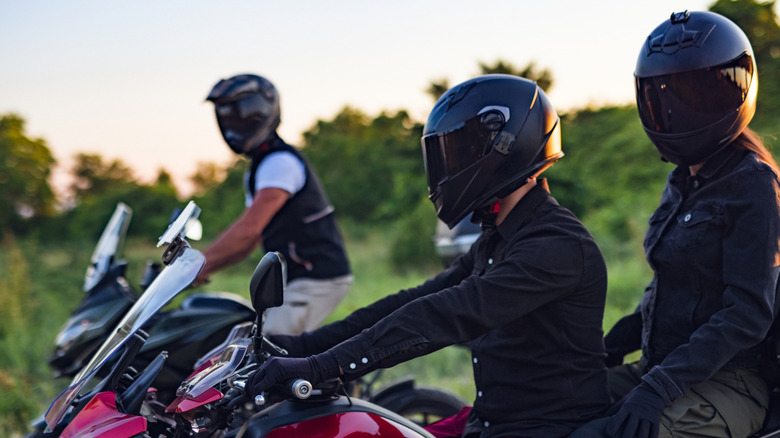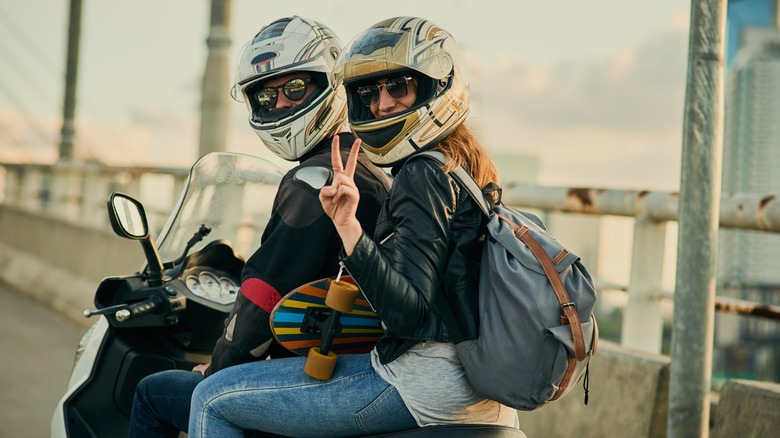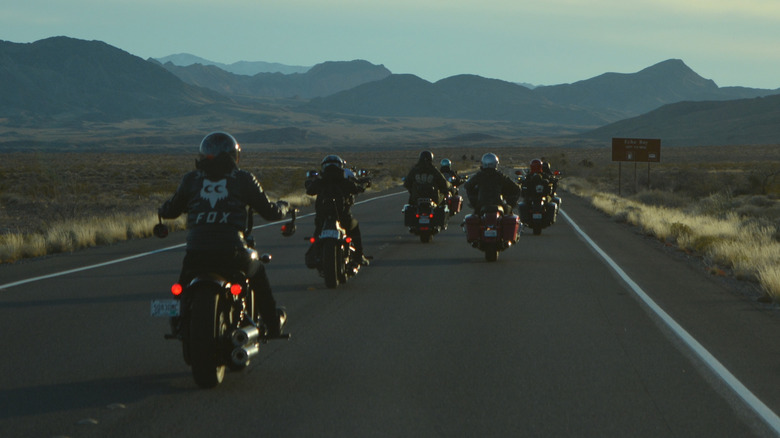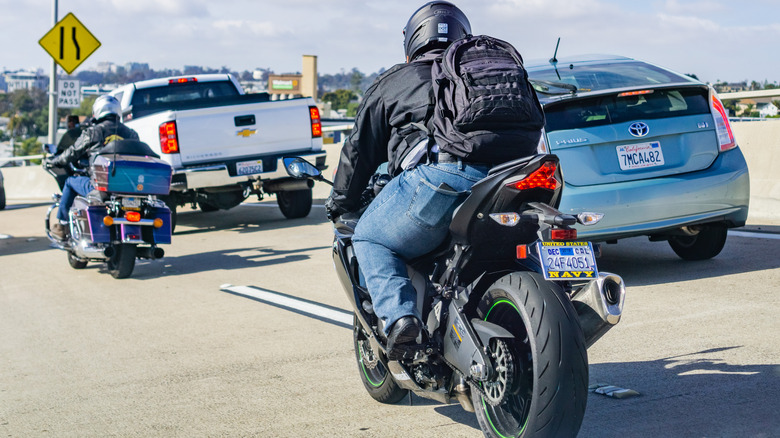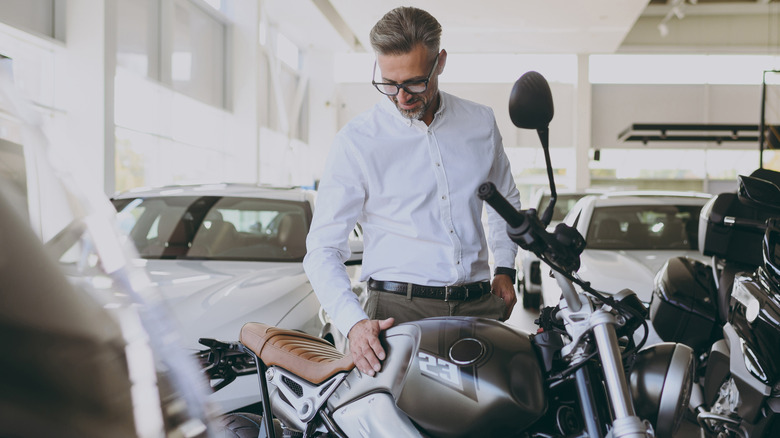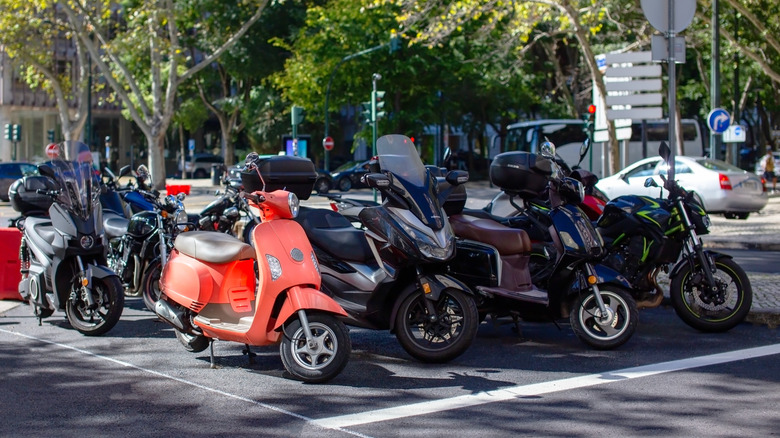5 Motorcycle Etiquette Rules Every Rider Should Know
There's a lot to learn when it comes to motorcycles, as operating controls with your hands and feet is a juggling act that takes some practice. It can be a bit confusing to feather the clutch with your left hand, shift with your left foot, remembering that it's down for first, up for all the other gears, using the right lever for the front brake and the right foot for the rear brakes. This is all while steering, counter steering, and keeping your head on a swivel to be fully away are of your surroundings.
Thankfully, with time and experience, it eventually becomes second nature. Getting used to the dynamics of a two-wheeled machine, however, is just part of the experience. Once you've got the basics of riding down, or maybe even before you hop on the back of a motorcycle, there are some pieces of motorcycle etiquette that you should know too.
I've been riding for years, on various street (and some dirt) motorcycles. I'm not the world's foremost authority on all riding etiquette tips, but these practices have helped keep me safe, and made the other riders around me feel that way too. Plus, these tips are often associated with more enjoyable ways to ride. On top of doing things like making sure your bike's maintenance is up to snuff and wearing all the proper gear, there's a lot you can do to improve your experience and the experience of other riders.
Learn all the hand signals
Before you ride with other riders, especially on long or complicated ride routes, it's best to set some ground rules. Discuss how often you'd like to stop, the kind of pace you'd like to maintain (slow, fast, whatever you fancy), and go over the important motorcycle hand signals, so everyone is on the same page. Knowing that one of your buddies is pointing at their gas tank because they're running low on fuel is seriously helpful so you don't miss the exit when they pull off the highway. Communication systems and other gadgets are common these days, but not everyone has one installed in their helmet, and they can fail from time to time. Plus, hand signals are pretty universal to riders, so you don't even have to know another rider to be able to warn them properly about danger.
Sticking a foot out to point out a rock or a patch of loose gravel could save your friends from going down in the corners. Patting your head when you see law enforcement may just save a stranger a speeding ticket. Even if you aren't riding in a group, knowing these hand (and body) signals can help you out when you pass other riders on popular roads or out on the highway. And waving to fellow riders with the two-fingers-out wave always puts a smile on my face (especially when they wave back), so hopefully it'll bring a bit of joy to your life too.
Ride staggered in groups
If you're riding in a group, there are a number of ways to stay safe, and there are plenty of ways to make things much more dangerous. Following too closely, going faster than the comfortable pace of other riders, and riding single-file are all ways to increase your danger. Staggering riders in a group, especially a large group on a big road, is a small but effective strategy that can keep you from colliding with the back of your friend's motorcycle. What's more, even with just two motorcycles, having a pair of headlights or taillights instead of a single-file formation, makes you more visible to cars coming or going.
Even while riding alone, it's best to stick to one side of the lane or the other, rather than the center. Being in the left or right side of the lane generally makes you more visible in the side-view mirrors of other cars. And, should a car stop suddenly in front of you, it's slightly easier to avoid them by braking and going around the side in one direction. Finally, it's easier to see around vehicles ahead if you're riding in one side of the lane or the other — much like your position while driving a car. It can help you anticipate changes in traffic and whether the car in front of you will be slowing rapidly or not.
Keep cars in mind
I ride with a pretty intense mindset, and while it might not be healthy, I always assume cars on the road are going out of their way to harm me. I assume that it's their mission to knock me off my motorcycle and off the road. It's a bit stressful (and admittedly dramatic), but it keeps me on high alert in busy traffic. If someone makes an unannounced lane change or a sudden stop, I'm ready for it. Sure, not everyone is out to get me, but that riding mindset has kept me out of trouble more than once.
If you live in a state or region like California, that allows lane splitting or lane filtering, keeping other drivers in mind is really important. Sneaking up behind a driver then passing them too closely between lanes can cause them to react poorly, potentially jerking the steering wheel out of fear. It's happened to me more than once, which is why I typically like to wait for drivers to acknowledge my presence before I pass.
Look in the driver's rearview mirrors if possible. Check their head position to see if they're distracted or staring at a cell phone. They may not even know you're there. If I can tell that drivers see me, or even better they move out of the way, then I'll proceed with caution. Riding by drivers with a big speed differential is a recipe for disaster — avoid it at all costs.
Don't touch or sit on other people's motorcycles
The same way you wouldn't hop into a stranger's car uninvited, you shouldn't touch or sit on motorcycles that don't belong to you. The exposed nature of motorcycles is inviting. We see other riders' modifications, their new bike's cool new features, and we want to inspect them up close. Resist that urge. Even more importantly, always resist the urge to sit on someone else's bike without permission. Touching someone else's motorcycle could accidentally result in tipping the bike over, and if you swing a leg over to sit on the bike, that's a pretty good way to get yourself in trouble with the owner. Especially if they're protective of their stuff.
The best bet, if you want to feel the aftermarket grips, get a sense for the seating position, or otherwise inspect via feel of someone else's bike, is to ask. Most riders are happy to let you take a closer look, sit on, or take a photo of their motorcycle. And if they aren't, thank 'em and move along. It's what you'd want if someone asked to sit on your motorcycle, especially if you just washed it, or you were too nervous about it getting tipped over, or you just had somewhere to be with no time to spare.
Parking etiquette
Having a motorcycle makes a lot of tasks easier. The svelte size of bikes means you can often squeeze into spaces cars can't, especially in crowded parking lots. But you should resist the urge to park anywhere there's open space. Don't park your motorcycle in the lane between handicapped parking spaces, for instance.
That striped area is for someone to load in and out of a vehicle, often with a ramp for a motorcycle, or at the very least, needing a wide-open door. Don't park on the sidewalk just because you can — that space is for pedestrians. Park in designated motorcycle spots where they're available and when parking in a full-size car parking spot, try to park near the rear of a parking spot so drivers looking for a spot will be able to tell yours is taken from far away.
In some areas, it's legal to share a parking space with (check the laws in your area before doing this), specifically a metered space on the street. If that's the case where you are, make sure you're not blocking anyone from leaving their space and be sure to park far enough away from their bumper that you don't accidentally kick the car while dismounting your motorcycle. If you're riding in groups, try to share parking spots too. Depending on the size of your bikes, typically four motorcycles can fit in one car-sized parking spot.
